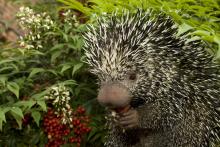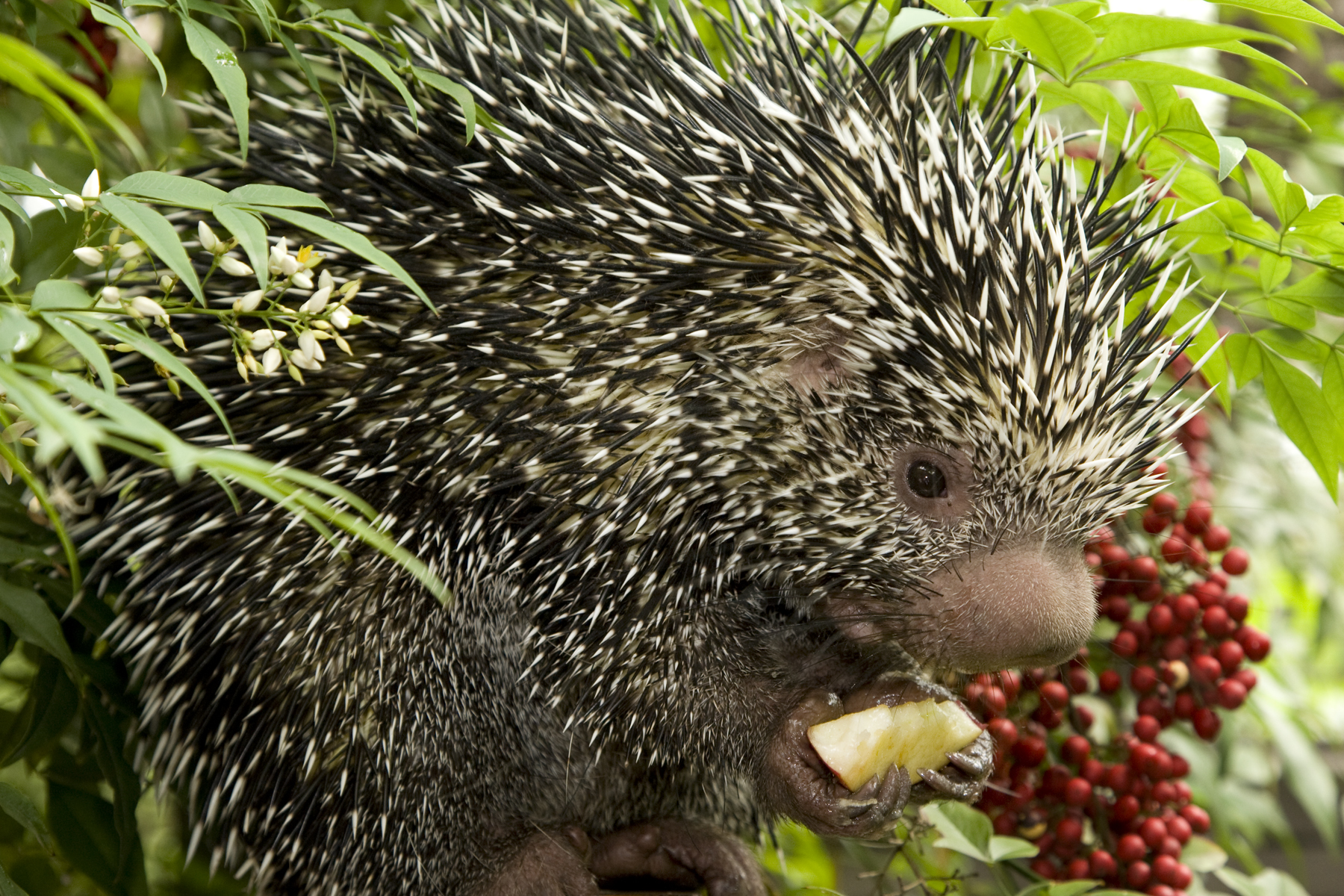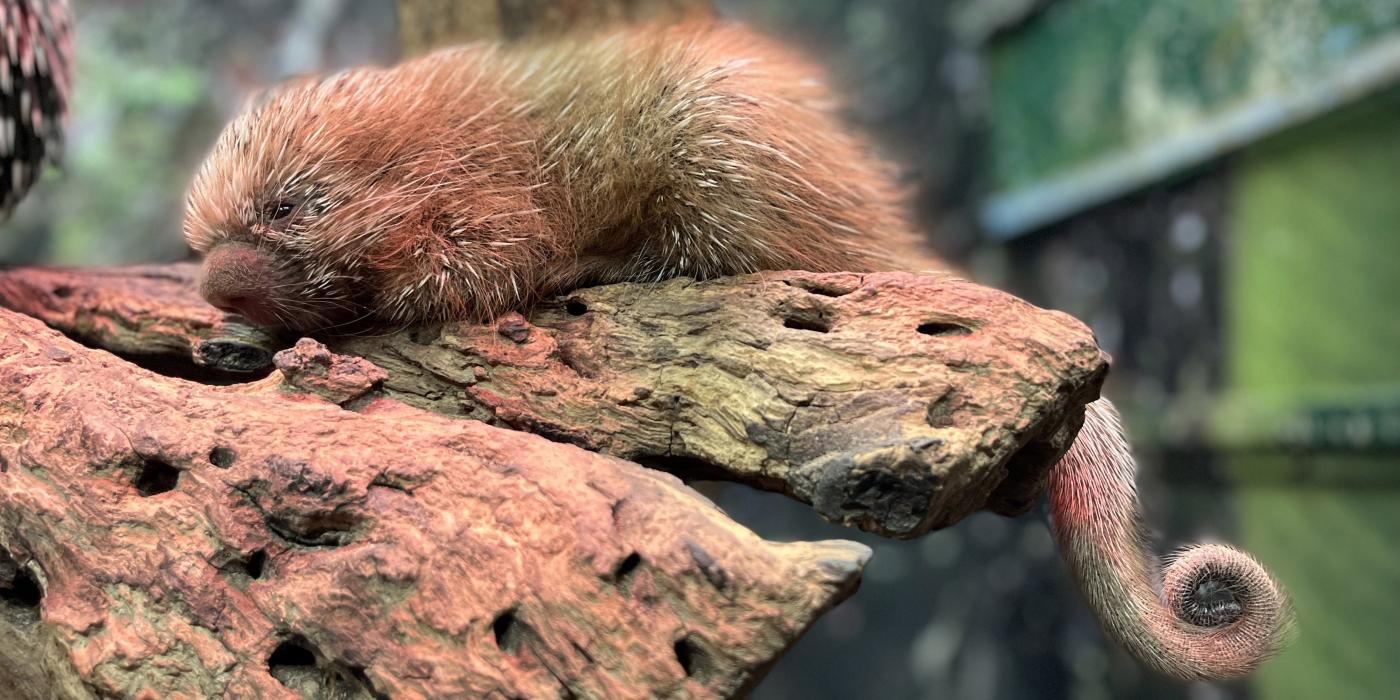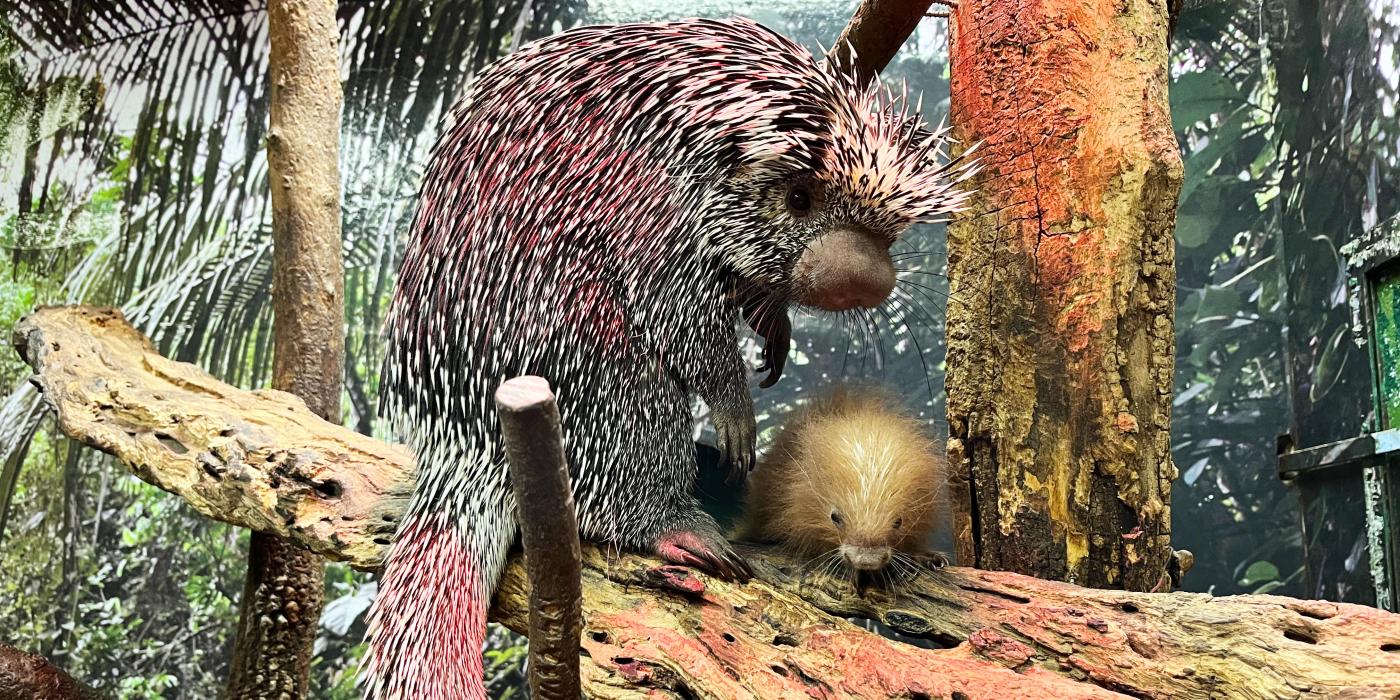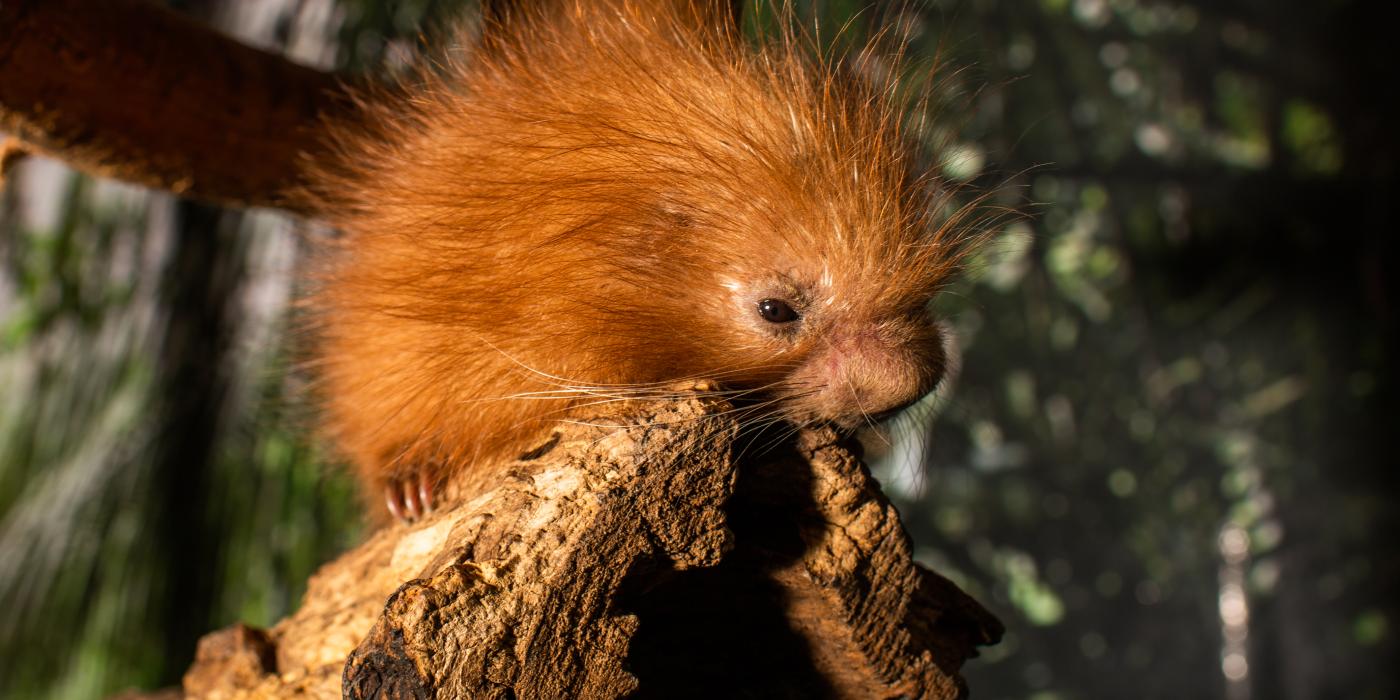Prehensile-tailed Porcupine Dies at Smithsonian’s National Zoo
A well-known prehensile-tailed porcupine named Clark died March 7 at the Smithsonian’s National Zoo. Clark had developed intermittent wheezing and a suspected upper-respiratory tract infection earlier this year that did not completely improve with antibiotic and anti-inflammatory treatment.
In February, he was brought to Friendship Hospital for Animals in Washington, D.C., for a CT scan and endoscopy. Although the CT scan showed that his lungs looked healthy, the endoscopy revealed tracheitis—or inflammation within his trachea. Veterinarians administered additional antibiotics and nebulization to treat the tracheitis. However, yesterday morning he was rushed to the veterinary hospital for an emergency exam after keepers noticed he had increased difficulty breathing.
Radiographs indicated that his tracheitis had worsened and likely progressed to the lungs. Due to his rapidly declining condition and quality of life, he was humanely euthanized.
The median life expectancy for prehensile-tailed porcupines in human care is 11 years old.
Clark was born at the Zoo in 2009 and was hand-raised by keepers after his mother was unable to care for him. After spending three months at the Zoo’s veterinary hospital receiving round-the-clock care, he was returned to his home in the Small Mammal House, but was unable to be reintroduced to his mother. Keepers remember him as a favorite of the Small Mammal House, who always readily participated in training.
Clark was introduced to the Zoo’s adult female porcupine, Bess, after she arrived from Zoo Miami in 2015. The Association of Zoos and Aquariums’ Species Survival Plan had recommended the two porcupines to breed. During the past three years, Clark and Bess had four offspring: Charlotte, Chloe, Rico and Beatrix. Visitors can still see Bess and Beatrix at the prehensile-tailed porcupine exhibit at the Small Mammal House.
Prehensile-tailed porcupines are nocturnal and native to South America. They use their tails as an extra limb, wrapping them around tree branches to help them balance as they navigate the tree canopy. All of their bodies, with the exception of their stomachs, are covered in short thick quills.
Related Species:
Image Gallery

